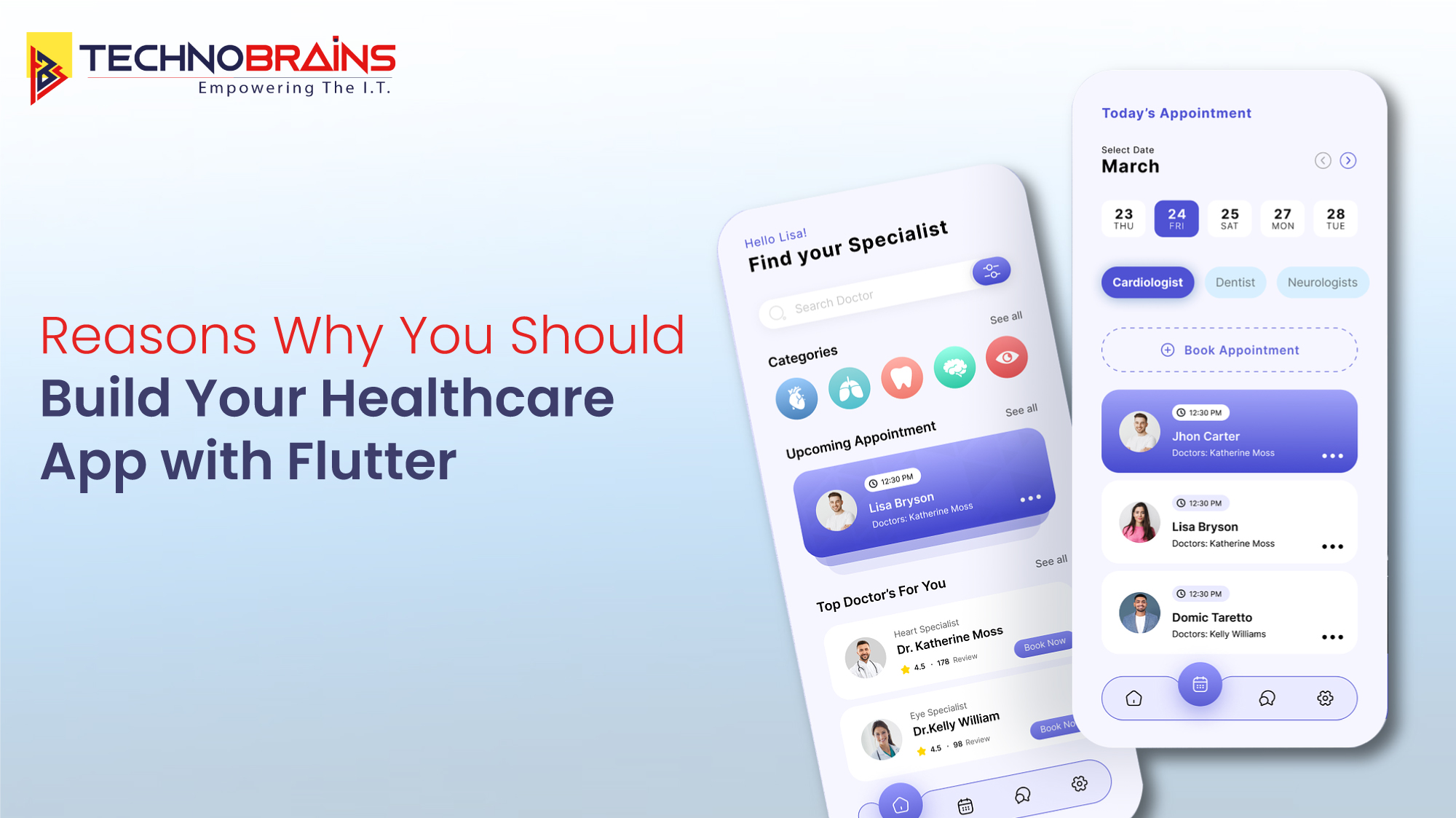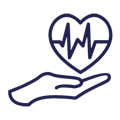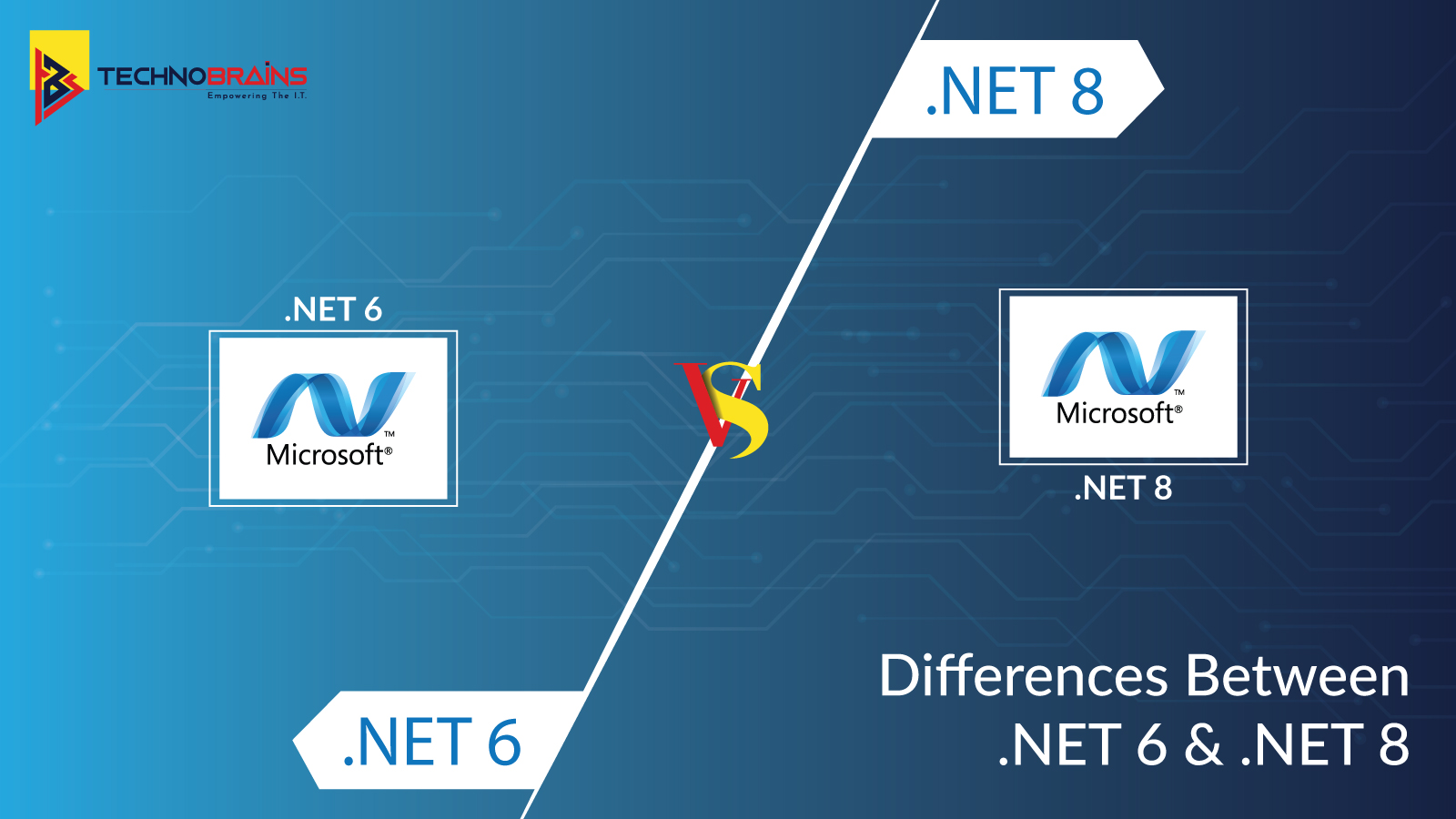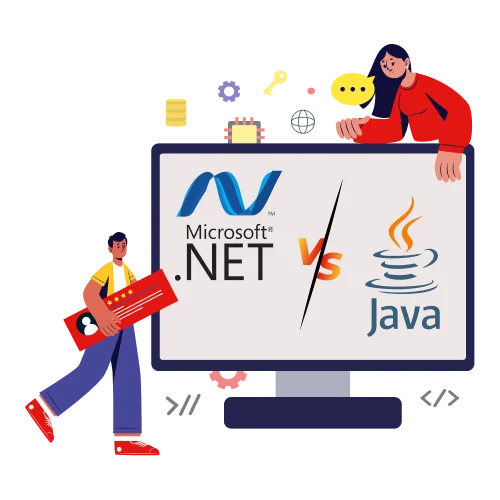In today’s digital era, technology has had a significant impact on the healthcare industry. Mobile applications became an essential tool for healthcare providers, making healthcare service convenient.
When we speak numbers, this fact becomes more evident. As it goes, in 2023, the mHealth app market was valued at $55.32 billion, and it is predicted to reach $68.77 billion by 2024. Moreover, it will continue to rise at an annual rate of 24.7%, growing to $166.28 billion by 2028. The rise can be attributed to how people are becoming more conscious of their health and well-being, an area where mobile apps are indeed key contributors.
Developers feel challenging to choose the right platform. The right platform determines the success or failure of healthcare mobile applications. There are a wide range of platforms available for application development. Among these numerous options, Flutter emerges as the best framework for medical apps.
If you’re wondering why and looking for the exact answer to this question, then look no further.
In this article, we will delve into the reasons of choosing Flutter for developing healthcare app development.
Read Also, Flutter App Development: Overview, Benefits, & Drawbacks
Why Flutter is Your Optimal Choice for Medical App Development?
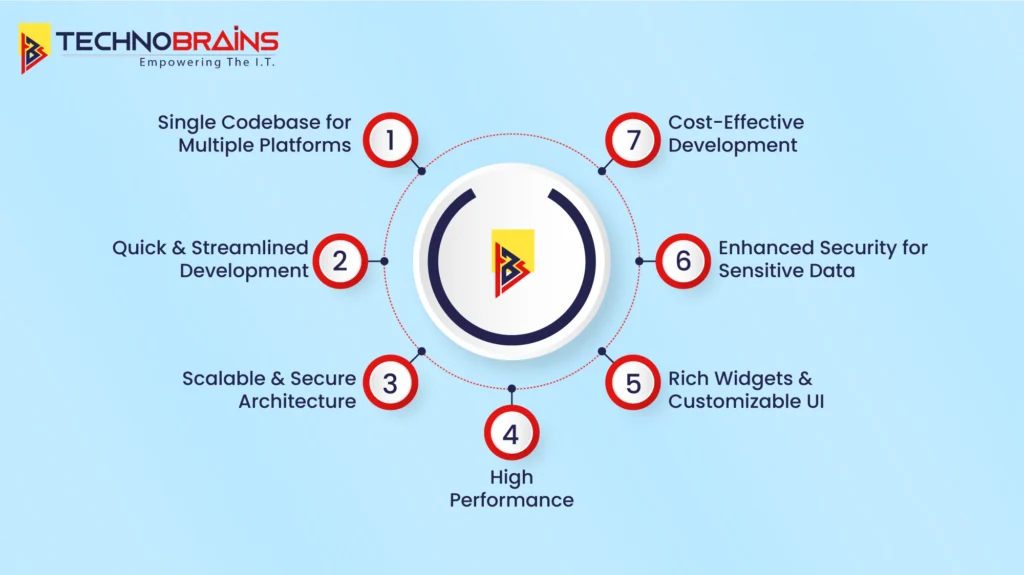
1. Single Codebase for Multiple Platforms
Healthcare apps are designed to reach users across devices, making healthcare accessible regardless of the choice of device. However, users might have access to different devices and platforms, in which case reaching them would prove difficult for healthcare providers. Right? While this is true to some degree, it is never the case with Flutter.
Using a single codebase, Flutter allows creation of native applications. It enables developers to write their code just once, deploying it on both iOS and Android. It saves time and resources.
2. Quick & Streamlined Development
In today’s competitive healthcare landscape, getting healthcare apps delivered to patients and medical professionals quickly has the capacity to make all the difference to your health institution’s success. As we previously stated, Flutter’s single codebase approach eliminates the need for duplicative development efforts for Android and iOS.
In addition, Flutter offer hot reload features, enabling you to see instant changes, accelerating and developing the process, paving the way for faster iterative cycles.
This ultimately translates to quicker app delivery and lets you capitalize on time-sensitive opportunities, getting your apps into the hands of users faster and improving patient care more efficiently.
3. Scalable & Secure Architecture
Medical apps often require complex functionalities, involving data management, secure communication, and a well-defined user interface. Flutter’s mobile app architecture promotes the use of clean architecture principles. This means separation of concerns between the business logic, data layer, and UI layer. This separation allows for easier maintenance, testing, and scalability of the app. Flutter’s rich set of widgets and state management solutions further contribute to building a clean and modular app architecture, ideal for the intricate functionalities demanded by healthcare applications.
4. High Performance
Medical apps deal with a lot of sensitive data and serve to facilitate real-time interactions between patients and healthcare professionals as well. Imagine a healthcare app that fails to bring vital information or records to patients fluidly on demand or completes a medical dosage calculation with a lag. Such delays could have grave consequences, necessitating peak performance at all times. Flutter’s ability to deliver high-performance apps with smooth UI rendering ensures your app steers clear of such flaws and can perform optimally without a hitch.
5. Rich Widgets & Customizable UI
Flutter empowers you to craft exceptional user experiences through its expansive collection of customizable widgets. These pre-built UI components cater to both Material Design for Android and Cupertino for iOS aesthetics, guaranteeing a native look and feel on each platform.
But Flutter’s true strength lies in its ability to tailor these widgets and create entirely custom ones. This granular control allows for the development of user interfaces that perfectly align with the specific needs of healthcare apps.
Picture interactive charts for visualizing health data, custom appointment scheduling interfaces, or so much more—all built using Flutter’s rich and adaptive widget library. This level of customization will help you create intuitive and aesthetically appealing healthcare apps that prioritize the user experience and make interacting with healthcare information a breeze.
6. Enhanced Security for Sensitive Data
Security is non-negotiable in healthcare applications. Flutter protects user data from unauthorized access, offering built-in security features. In addition, Flutter based applications are resistant to certain attacks, when compared to interpreted languages.
Not only that, but Flutter apps comply with strict healthcare regulations like HIPAA and GDPR, guaranteeing complete patient health information protection and establishing the groundwork for a robust and secure healthcare ecosystem. This gives healthcare organizations peace of mind knowing that their users’ data is well-protected and secured adequately.
7. Cost-Effective Development
Cost is a significant factor in healthcare app development. Flutter excels at fostering cost-effectiveness throughout the development lifecycle while ensuring the best possible results without compromising on quality.
Let’s understand that with an example. The endeavor of developing two native apps comes with a hefty price tag, which can put a strain on your budget. With Flutter’s single codebase approach, however, this prospect is out of the question since it lets you write code only once and deploy it across multiple platforms. This automatically translates into considerable cost savings.
What’s more, Google’s consistent backing reinforces the framework’s long-term viability, reducing the need for costly rewrites down the line. This also allows healthcare institutions to confidently leverage Flutter, knowing they’re investing in a future-proof technology, contributing to huge long-term cost savings.
Read Also, Healthcare Apps Innovations: Transforming Healthcare Industry
Conclusion
Using Flutter for your next healthcare app development project can bring about a ton of advantages. If you’re looking to create reliable, efficient, secure, and next-gen healthcare solutions that are primed for success, Flutter should be your top choice. Its cross-platform capabilities, high performance, and ability to craft memorable experiences are what position Flutter as the best framework for developing medical apps.
If you realize the potential of Flutter and would like to invest in leveraging its capabilities for your next app development initiative, consider engaging Flutter app development services from TechnoBrains. With specialized domain experience in the healthcare field, rich know-how with the Flutter framework, and proven excellence, TechnoBrains is your ally in driving innovation and transforming your concepts into high-quality, cutting-edge Flutter-based software apps.
Stuck with questions? Contact us now and get answers to all your questions now!
